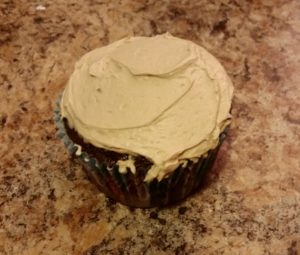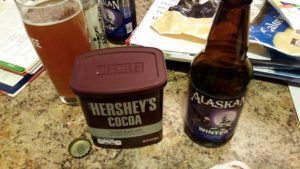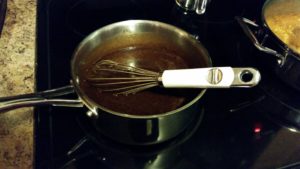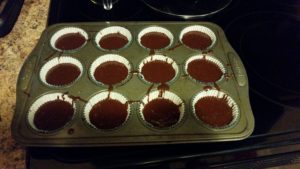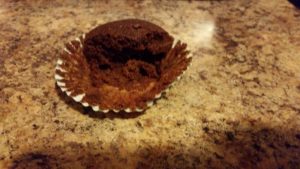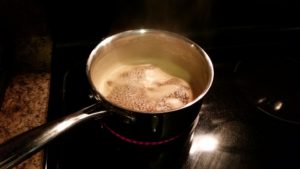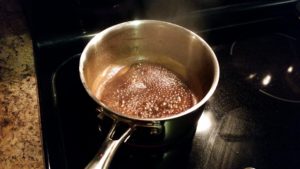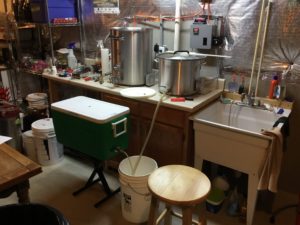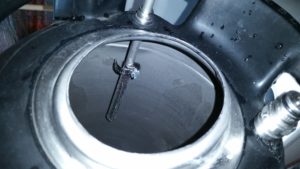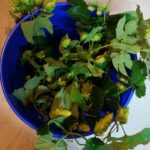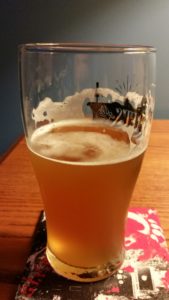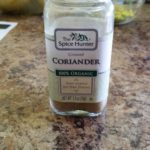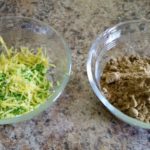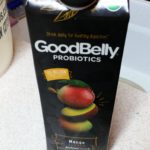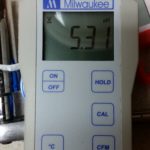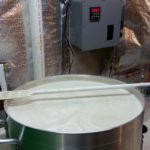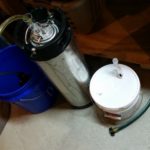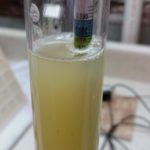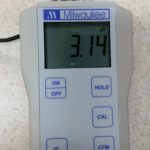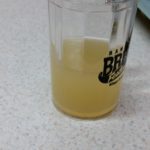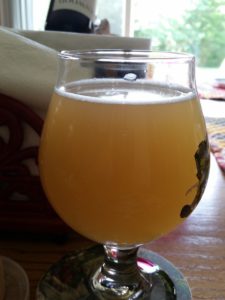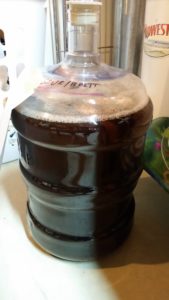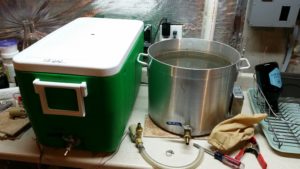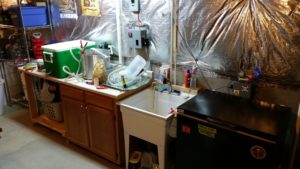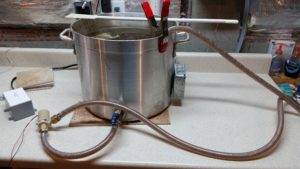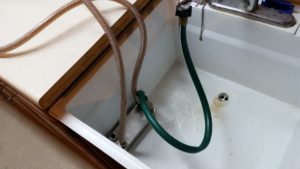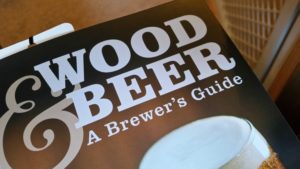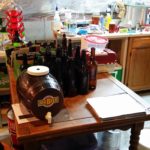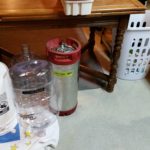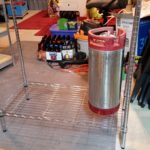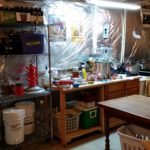Latest Posts
Cliche End Of Year/New Years Resolutions Post
2017 Recap
As per usual, this is the cliche end of year recap for all the stuff – both good and bad – that happened this year.
Good Stuff
I made my first two kettle sours. Yeah, one is a gusher and some bottles don’t taste as good (lactic acid is not as good as sour blend). One took a gold medal in a local competition.
I built a larger boil kettle. This was both safety and functional issue, and it also resulted in being able to shorten my brew day.
I bought a mill to hopefully improve efficiency.
I brewed 9 times.
Bad Stuff
I blew up two pumps and three transformers/power supplies. It has made whirlpool and chilling difficult.
Three brews did not turn out at all as planned. One was a kettle sour Berliner Weisse that had a yeast contamination a little too early and I was not patient enough with. One was an Iron Brewer competition entry that seemed to also get a contamination (likely brettanomyces). One was an IPA that had a bunch of fusel alcohols. Needless to say, I learned from all.
New Year’s Plans

And to do this, I have to BUILD THE WALL.
Seriously.
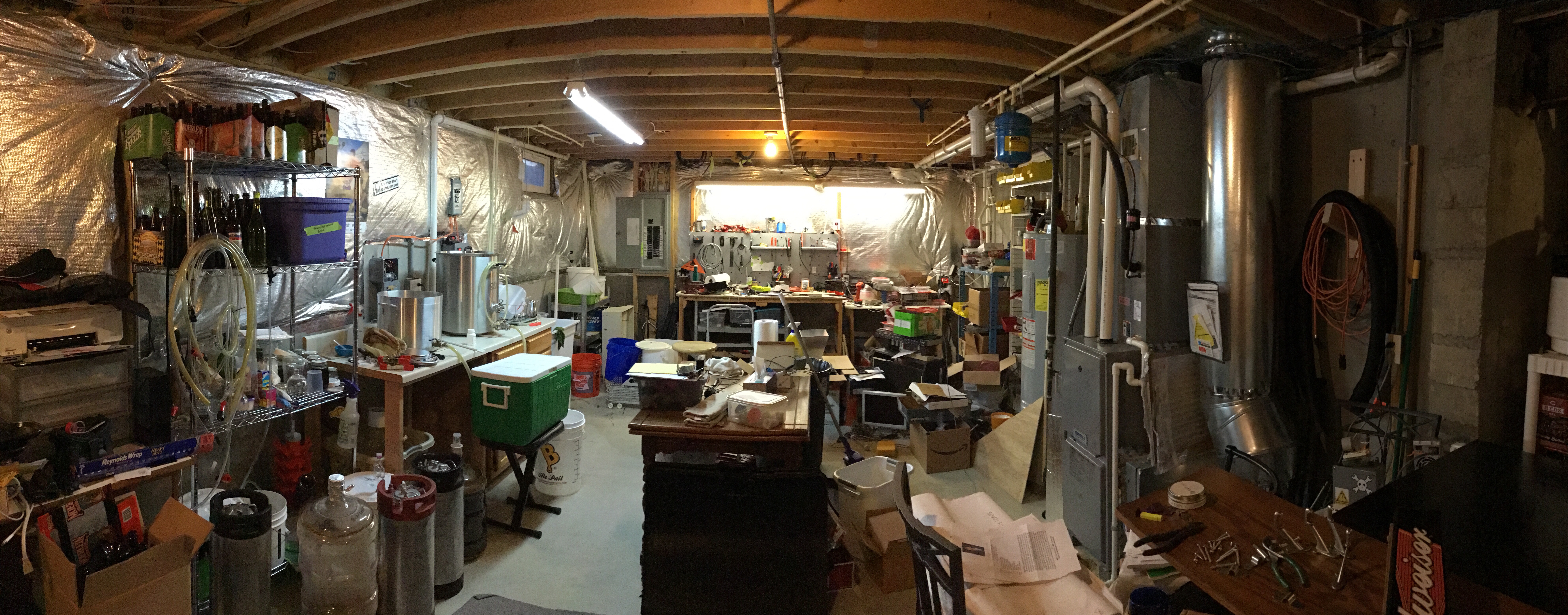
The pic above shows the current environment. The furnace on the right gets very loud, I have no ventilation, the lighting sucks, and I don’t feel like I have enough space to be organized. So the plan is to build a wall blocking the noise from the furnace, and in the process I’m going to improve airflow in the house and add a UV filter (to deal with my wife’s allergies that seem to be related to a certain cat litter that we no longer use).
In not-as-major stuff, I’m going to improve my pump, whirlpool, and chilling situation. And I’m going to move towards having temperature control for fermenting.
To fund all this, I’m going to buy less commercial beer. It’s a sacrifice. I’m even tempted to unfollow a few local beer stores because they cause temptation (that’s kinda their job).
In terms of goals that have less to do with equipment, I’m going to try to medal in another category. THAT is a lofty goal (and it’ll be fun… and delicious … to work towards!)
Cheers!
Cooking With Beer: Winter Ale Cupcakes with Stout Icing
I made some cupcakes with beer!
I used this recipe from Hallmark (of all places) substituting Alaskan Winter Ale for the Guinness in the recipe.
The cupcakes initially tasted like lesser-sweet chocolate cupcakes, however after they cooled you could definitely taste the maltiness. Alaskan Winter is an old ale, it’s on the malty side, and I’m glad I used that and not something hoppy.
The icing was the porter frosting from this recipe. I used Braxton Dead Blow stout instead of the porter.
Once the frosting was completed, it had a coffee flavor that was really quite nice. Additionally, the frosting recipe is enough for two batches, so I have some in my freezer!
Cheers!
IPA Brew Day – Make IPA Great Again!
It was a dark and stormy brew day.
No, actually, it was cold and cloudy. I was inside though. I started the brew day at 7:30 AM by getting both kettles going with water – the BK had the mash tun heat up water and the HLT had my strike water (which I measured the prior night and filled the HLT to let the chlorine dissipate. I put a lid on the BK and then went upstairs to make breakfast for the family.
Backstory
I decided that since I now have two medals in styles that I like (but not love), I am going to try to medal in styles that I love – which basically means IPA. Maybe APA. Probably also British Bitter. Possibly dunkelweisen too (we’ll see). This is the first of that – I want to make an IPA that hits all the marks in the right spot. While I have been really enjoying some NEIPAs (specifically those from Listermann Brewing), this one will be clear, bitter, and aromatic. I want only some malt sweetness, and I definitely want it to take a backseat to the hops.
Brew Day
Upon returning to the basement brewery, I pulled the lid giving myself a nice steam burn on my left arm. I realized the element was at the max despite being set to ‘5’. I think the SSR is melted. I pulled the plug on the BK and drained the water into the mash tun to preheat while I added 5 ml of acid to the HLT for the mash water. Once the mash tun was mostly empty, I dumped the rest and dumped the grain into it. I shut the element off on the HLT and doughed in, hitting a mash temp of 154ºF, which only dropped to 152ºF over the hour rest. Mash pH was good, at about 5.3. After the hour, I recirculated and lautered for more sweet wort than I’ve ever received for first runnings – it was around 3.1 gallons, I was shooting for 3.5 gallons. Looks like the union I installed into the mash tun helped! I began the batch sparge and 10 minute rest and then dumped the first runnings into the BK. After the rest, I recirculated and lautered for just under 3.5 gallons for the second runnings and added the second runnings to the first in the boil kettle. I stirred and pulled a sample and then began boil.
And what a boil it was. Since the SSR was melted, it’s like using a propane burner on max. I started with around 6.5 gallons, and my final volume was around 5 before chilling caused me to lose some more (maybe 0.5 gallons, I ended up with 4.5 in the fermenter). When adding my 15 minute hop addition, I rigged the plate chiller and started recirculating boiling wort through it without running anything in the cold side. 15 minutes later, I shut off the element and turned on the cold water to begin chilling. At some point my pump failed, as it wasn’t pumping anything. My response to this was to use gravity to chill to my bottling bucket, and then drain the bottling bucket through the plate chiller and into the fermenter. This worked (I got down to 72ºF or so), but it was a pain and subjected the wort to some oxygen when it is most vulnerable to oxidization.
I pitched the yeast, I decided to use Denny’s Favorite, which appears to be from North Coast Brewing (the people that make Old Rasputin). The Fermentation temperature reached 75ºF around 24 hours post-pitch, and around 40 hours post-pitch was down to 70-72ºF.
Recipe
.
[beerxml recipe=”http://www.runningonbeer.net/wordpress/wp-content/uploads/2017/11/MakeIpaGreatAgain.xml” metric=false mhop=false misc=true]
Serving
After conversing with some fellow homebrewers on Reddit, I decided to give this a week to 10 days in the fermenter, crash it, rack it to a keg with an added hop sock of the dry hops and slow carbonate it over a week or so.
Notes
2017-11-11: Brewed
2017-11-19: Kegged
https://twitter.com/HamBrew807/status/933109708378034177
Cheers!
Fresh Hop Brew Day
With the new boil kettle and controller ready and wet tested, it was time to brew. What better time than when I have fresh Chinook hops coming off the vine!
I didn’t get enough from my two bines, so I had two packs of pellets to supplement the fresh hops.
I doughed in and hit my temp of 154, but too much acid adjustments caused it to fall. I should have let it go, as Brulosophy has shown that pH may not be as important as I think it is.
I ran into a few problems with yeast. I had an old Northwest Ale yeast that I harvested from an old batch and kept in my keezer, but it didn’t do anything in a starter. So I found a London Ale smack pack kept in the same keezer that was six months old. It didn’t inflate nor did it react in a starter. So I dropped by the LHBS and found a pack of Denny’s Favorite that appeared pre-smacked (although I thought I felt the pack in it). I gave it a day to inflate while I left the wort in my keezer to chill from the high-80s to hopefully below 70. No inflation. I pitched both it and some S-04, and of the pack that I thought I felt – it was in it, intact. Fermentation was quick but hot – the sticker on the side showed 79 at one point!
I’m calling this a British “Ordinary Bitter”.
Finished Beer
Appearance: copper colored, light carbonation with a thin white head. Good lacing.
Aroma: Earthy and bready
Flavor: bready, some orange (potentially marmalade), some earthiness or pine, but it is not promintent. Slight bitterness. Not strong at all.
Mouthfeel: smooth, medium dry finish with lasting but light citrus bitterness.
Ch-ch-ch-changes
I need to buy a pump. The ability to whirlpool while watching the temperature of the wort drop is worth every penny. Right now, I have one shot to send wort through my plate chiller and it doesn’t get it chilled enough.
I need to make progress on the fermentation chamber #2. I have a peltier element and several fans that can make this happen, all I need is some foam insulation and plywood (for structure) and some time to work on it.
Brew Log
2017-09-02: brewed on a rainy day
2017-09-05: fermentation appears finished
2017-09-13: moved to keezer for cold crashing
2017-09-15: kegged, pressurized to 30 PSI to carbonate
2017-09-16: removed gas line, took taste pour, left on normal carb (11 PSI)
Lemon-Lime Gose Brew Day
I’ve been enjoying various fruited goses (I blame Urban Artifact, Keypunch is awesome, and Pinwheel and Sliderule are pretty damn good!). So I decided to brew a lemon-lime gose. The recipe is basically the Milk the Funk Gose with an added 0.25 oz lime zest and 0.25 oz lemon zest. This was one of my almost-better brew days – I hit my mash temp (154F) and pH (5.3). The only problem is that I forgot campden tablets. Here’s hoping the souring rest and the fact that I used hot water from the water heater (as opposed to tap water) means that the chlorine will make it’s way out of the water.
Recipe and Brewing
I mashed normally, boiled for 10 minutes, chilled to 100, racked to fermenters and added an entire quart of GoodBelly Mango. Since I had more wort than space in one fermenter, I put 5 gal (ish) into an old keg and 1.5 gal (ish) into a fermenting bucket. I used most of the GoodBelly in the keg, but I did save some for the bucket (of course). After a day, I added some US-05 yeast. Basically a kettle sour, but I’m not reboiling because I’m lazy. The notes section in the BeerXML below has more of the nitty-gritty details.
Recipe Details
| Batch Size | Boil Time | IBU | SRM | Est. OG | Est. FG | ABV |
|---|---|---|---|---|---|---|
| 8 gal | 10 min | 0.0 IBUs | 2.8 SRM | 1.034 | 1.008 | 3.4 % |
| Actuals | 1.038 | 1.01 | 3.7 % | |||
Style Details
| Name | Cat. | OG Range | FG Range | IBU | SRM | Carb | ABV |
|---|---|---|---|---|---|---|---|
| gose | 27 | 1.036 - 1.056 | 1.006 - 1.01 | 5 - 12 | 3 - 4 | 2.6 - 3.4 | 4.2 - 4.8 % |
Fermentables
| Name | Amount | % |
|---|---|---|
| Brewer's Malt, 2-Row, Premium (Great Western) | 5 lbs | 50 |
| White Wheat Malt | 5 lbs | 50 |
Yeast
| Name | Lab | Attenuation | Temperature |
|---|---|---|---|
| Goodbelly | 72% | 64°F - 95°F | |
| Safale American (US-05) | DCL/Fermentis | 77% | 59°F - 75°F |
Mash
| Step | Temperature | Time |
|---|---|---|
| Mash In | 150°F | 75 min |
Notes
| Brewed 6/3/2017. Used hot water, forgot campden tablets, initial mash pH 5.6, added 5 mL 88% lactic acid to bring to pH 5.3. PID was at 170 for several minutes, mash rested at around 154. Mashed out with 1.875g at 200, brought temp to 160. Took 3g of first runnings at 1.086. Added 4 gallons sparge at 200 with 3 mL 88% lactic acid. Batch sparge rest for ~10 minutes at 172. Took 3.8g second runnings at 1.027. Combined pre-boil wort was 1.038. Boiled for 10 minutes, KO and added 1.0 oz ground organic coriander, 0.5 oz sea salt, 0.25 oz lime zest (in hop bag) and 0.25 oz lemon zest (in hop bag). Stirred and drained through plate chiller to around 100 filling keg fermenter and ~2 gal into a small food-safe bucket. Added most of 1qt mango Goodbelly to the keg, the remainder to the bucket. pH of 5.05 into fermenter, measured after pulling a sample (because I forgot to check earlier). OG 1.038. Into fermenter around 4:30. |
Download
| Download this recipe's BeerXML file |
Pictures
- The only coriander I could find.
- 0.25 oz lime zest, 0.25 oz lemon zest, 1 oz ground coriander, 0.5 oz sea salt.
- I used it all.
- Mash pH. Nailed it!
- Preparing for boil.
- In the fermenters. The recipe called for 8 gallons, I actually had around 7, so 5 into the keg and 1.5 into the small bucket.
- 6/10/17 check. 1.010 gravity.
- 6/10/17 check. pH = pi
- 6/10/17 check. I’m pleased with the color.
Brew Log
2017-06-03: Brewed. OG 1.038, pH 5.05. Began souring rest at 100F at around 4:30 PM.
2017-06-04 12:00 PM: Checked pH = 3.62. Nice sourness after not even 24 hours!
2017-06-08 7:00 PM: Checked. 1.015 SG, pH = 3.22. Next time, I’m going to re-boil like a traditional kettle sour.
2017-06-10 2:45 PM: Checked. 1.010 SG, pH = 3.14. Mostly lemon flavor with some slight sweet-lime flavor on the finish.
2017-06-14 ?:?? PM: Checked. 1.008 SG, pH = 3.20. Dry hopped 1.5 gal batch with 1 oz Soriache Ace hops.
2017-06-16 6:00 PM: Checked, 1.008 SG. Moved to keezer for cold crashing.
Tasting Notes
Appearance: Hazy yellow. Actually looks like a NEIPA, not like a gose. Maybe it just needs more time to clear.
Aroma: The lactic acid dominates. Slight lemon.
Taste: Very acidic initial, lots of lemon through the middle with a slight lime finish.
Mouthfeel: Dry and sour. As expected!
Overall: It’s not bad for my second kettle sour, and definitely not bad for my first successful kettle sour! However some changes should be made for the next batch:
- Boil after souring to kill off the lactobacillus, and do this at a pH of around 3.4, not letting it hit 3.2. Right now, it’s just a little too acidic.
- Forget the lemon. Just use lime zest, keep some of the juice (frozen, perhaps?) for at bottling. The lactobacillus has enough lemon flavor on it’s own. This might push the pendulum too far to the lime.
Cheers! Sour is sometimes the new hoppy!
Competition
Entered in 2017 Cincinnati Malt Infusers Oktobersbest Competition, won gold!
Berliner Weisse!
I’m starting to move away from the high-ABV beers for the summer, which seems to be starting early in Cincinnati. One thing I’ve liked in the summer has been a nice Berliner Weiss. Since my first sour is souring, I want something quick.
Enter Home Brew All-Stars. On page 156, there is a quick and simple recipe of a Berliner Weisse. Since I want you to buy the book through that affiliate link, I’m not including it here 😛
The Plan
Mash, Pasteurize, Sour, Ferment, Funkify, Complete.
I’m going to do a normal mash and sparge at around 150ºF for 60 minutes to ultimately result in around 5.0 gal of wort.
I’m only going to bring this up to 210ºF to pasteurize. It’s not really required, but if there is anything on the malt, it won’t be there after that. Post-boil, I am going to acidify down to pH 4.0 – 4.3 per recommendations on Milk The Funk Wiki, reduce the temp to 100, and drop into my new stainless fermenter.
Souring will be a through Lactobacillus Delbrueckii. I’m going to keep this warm with a water bath with a piece of shit acquarium heater (it’s apparently a known fish boiler, so it should be perfect for lacto).
Fermentation will be S-04. I’m not messing with liquid yeast for this, and my LHBS didn’t have S-05 that I could find. And I’m hoping the English-style yeast might have some yeast character. I’m going to give it 3-4 days to ferment. Not sure if it will ferment out, but I don’t think that’s important.
Funkification will be with some Brettanomyces Lambicus. I was hoping to find some Brettanomyces Claussenii, but neither my LHBS nor another LHBS had any. I’m going to let the brett ride until May.
Complete will be bottle conditioning utilizing that brett to hopefully add some funk.
Brew Day
Brew day was an accidental occurrence. My wife wanted me to check the hot water heater, so I figured now’s as good a time as any to heat up water for mash. I did miss my mash temp by a bit (I was about 148.7º, I was shooting for 154º).
Log
2017-03-05: Brew day
2017-03-07: Found that the hot water method of keeping the keg warm was not good enough, so I surrounded the keg with a heating pad and some insulation.
2018-03-08: Checked temperature in the morning, 83°. Checked again in the evening and found the same temperature but was going to taste until I opened the keg and found krausen, so I didn’t mess with it.
2018-03-08: Found this page. Cussed lots. Skipped the S-04 addition since something is in there. Taste is clean, though.
2018-03-09: Received a Milwaukee MW102 temperature and pH meter.
2018-03-10: Calibrated and checked pH. 3.85. Not sour enough. SG 1.002. Kinda plain.
2018-03-11: Decided to pitch brett. Let it ride a week or so prior to bottle conditioning because at this point there isn’t much left for the brett to eat.
Coming up
Adding Lactic Acid in 5 ml increments to make this a little more sour. Yes, I realize that makes it a little one-dimensional, and I’m “cheating”, but the end result is more important than the feeling of sacrosanctness among people that are unlikely to ever taste this beer.
Bottling!
Next Time
Obviously, I am going to try a better Lacto culture, specifically Lacto Plantarum, Omega Lacto Blend, or The Yeast Bay Lacto Blend, or Good Belly (h/t to PricelessBrew on Reddit for that). The funny thing is, I was going to use Good Belly Mango, but since my wife didn’t find it at the store and I was stopping by my LHBS and another LHBS, I decided to use WLP677 because that’s all I could find.
Also, I’m going to hit my mash temp.
Tasting Notes
<<This part is in progress – a picture will be here>>
Appearance: turbid, but not the right turbid.
Aroma: <<placeholder>>
Taste: <<placeholder>>
Mouthfeel: <<placeholder>>
Overall: I understand why people hate on adding acid. I think it works if you use a good acid BLEND as opposed to the LD Carlson Lactic Acid (MadTree Brewing does this in their Shade Blackberry Blackberry Gose). I can taste the fakeness, and it does not taste good at all. This batch was dumped, particularly because I brewed a gose that came out much better.
Cheers!
Water Part Drei
I brewed last weekend, and somehow my efficiency was way up.
YES HELLO!
I blame this on Bru'n Water – I tried it instead of Palmer's spreadsheet, and it told me to use a fuckton more acid. #homebrew pic.twitter.com/x2HOSn7udq
— Andrew Rohne 🍺🏃🍕 (@HamBrew807) February 4, 2017
According to BeerSmith, my mash efficiency is 87% and my overall brewhouse efficiency is 97%. I don’t believe that second number at all, but the first is pretty damn important to me, and it is wildly better than what I’ve done in the past.
I took one of my last recipes – an IIPA where I got 60% mash efficiency – and took a look in Bru’n Water. Using my water report found on the Internet and what I added based on Palmer’s spreadsheet, my mash pH was likely close to 5.68 after the 4 grams of gypsum and 1 mL of lactic acid. What I should have done was 4 grams of gypsum and 4.5 mL of lactic acid. That would have put my mash pH around 5.34.
Of course this could be a fluke. I did mash in high (the strike water started at 158ºF, I stirred it down to 155ºF), so there could be that. So there will be a part 4 and a part 5. One will be with a past recipe with a revised water adjustment profile, and another will be about my Ward Labs report… once I run a Ward Labs report!
Cheers!
2017: Looking Both Ways
I’m not making resolutions, because the calendar shouldn’t dictate things like that, but it’s a breaking point.
Looking Back
Several good things happened in the past year…
- I became more interested in brewing maltier styles despite still drinking hoppy styles.
- I read Brew Like A Monk and Homebrew All-Stars. Both excellent books.
- I improved my efficiency a little. I’m still below where I want to be, though.
- I won a bronze medal. I can now call myself an award winning homebrewer! 😂
- I started into water adjustments.
- I started kegging.
- I started, and then stopped, fooling around with my system.
- I brewed my first sour.
Looking Forward
As usual, improved efficiency. I pulled a sample of wort out of the mash tun during my prior brew day, and it was 122°F. Considering I was targeting and hitting 156°F, this is concerning. I am tempted to move to a cylindrical cooler.
I’m going to learn more. I started reading Wood & Beer just after Christmas, and then I bought Experimental Homebrewing (kindle) because I caught it when it was $2. I may also read the Brewing Elements series, particularly after reading how Cincinnati breweries work with their water.
I’m going to slightly expand the Batavia Basement Brewery. I intend to get two more Better Bottles. I’m going to get a 10 gallon kettle (and I might go ahead and get 12 or 15 just in case). I might do something to be able to control fermentation.
Not everything I do will be related to capital improvements. I’m going to brew at least two new-to-me styles (and by new-to-me, we’re talking styles I haven’t made, not styles I haven’t drank!). One will likely be a Belgian Dubbel. I’m going to make some quick-reference papers/cards to help me remember how I want to do things (like gelatin fining, kegging). I’m going to improve my kegging process.
Flanders Red Brew Day
The Recipe
The recipe is fairly simple, I’ve posted it before but I’ve made a few changes.
Recipe Details
| Batch Size | Boil Time | IBU | SRM | Est. OG | Est. FG | ABV |
|---|---|---|---|---|---|---|
| 5.5 gal | 60 min | 12.7 IBUs | 13.5 SRM | 1.053 | 1.012 | 5.4 % |
Style Details
| Name | Cat. | OG Range | FG Range | IBU | SRM | Carb | ABV |
|---|---|---|---|---|---|---|---|
| Flanders Red Ale | 23 B | 1.048 - 1.057 | 1.002 - 1.012 | 10 - 25 | 10 - 16 | 2 - 2.7 | 4.6 - 6.5 % |
Fermentables
| Name | Amount | % |
|---|---|---|
| Pilsner (2 Row) Bel | 8 lbs | 71.11 |
| Wheat - Red Malt (Briess) | 1.5 lbs | 13.33 |
| Caramel/Crystal Malt - 60L | 8 oz | 4.44 |
| Oats, Flaked | 8 oz | 4.44 |
| Vienna Malt (Briess) | 8 oz | 4.44 |
| Carafa II | 4 oz | 2.22 |
Hops
| Name | Amount | Time | Use | Form | Alpha % |
|---|---|---|---|---|---|
| Tettnang, U.S. | 1 oz | 60 min | Boil | Leaf | 4.5 |
Miscs
| Name | Amount | Time | Use | Type |
|---|---|---|---|---|
| Lactic Acid | 1.00 ml | 60 min | Mash | Water Agent |
| Irish Moss | 1.00 tsp | 15 min | Boil | Fining |
Yeast
| Name | Lab | Attenuation | Temperature |
|---|---|---|---|
| Roselare Belgian Blend (3763) | Wyeast Labs | 80% | 55°F - 80°F |
Mash
| Step | Temperature | Time |
|---|---|---|
| Mash In | 156°F | 90 min |
Fermentation
| Step | Time | Temperature |
|---|---|---|
| Primary | 4 days | 67°F |
| Secondary | 10 days | 67°F |
| Aging | 30 days | 65°F |
Download
| Download this recipe's BeerXML file |
Note: in the above, ignore the aging part, this is going to take a while… Also, my hops may not be very strong. I’m using year+ old homegrown hops, and in the past I think their strength has been low.
Brew Day
Brew day went generally without a hitch.
I mashed in with 3.5 gal of water at 174F, which settled to 156F. I let it rest, stirring occasionally, for 80 minutes when I added about a gallon of water at 190F. After 10 minutes, I vorlaufed and collected 3.5 (ish) gallons of wort, and batch sparged with around 3.25 gallons of water at 190F, which rested at 165F (about 5F below the target 170F). After all that, the pre-boil gravity was 1.057.
Boil was the standard one hour boil. 15 minutes prior to the end of the boil, I started the pump through the plate chiller, discarding the first little bit that pushed through and then recirculating through the boil kettle, creating a whirlpool. At the end of the hour, I set the PID to a low temperature (50-ish F) and turned the cold water on to the plate chiller. Chilling to about 70F took under 15 minutes.
It’s fermenting away now…
Oak Aging
Somehow, I’m going to get some oak in this. I don’t know how I’m going to do it, so maybe this will help…
Log
12/28/2016: Brewed, SG 1.051. Forgot to get pH reading.
1/5/2017: 1.008, pH 4.15. No acidity. Very bready.
1/14/2017: 1.008, pH 4.23. Light acidity. Still bready, but acid beginning to counter malt sweetness.
1/29/2017: 1.008, pH 4.34. More acid. pH meter is clearly fucked. It needs more time, but bready-ness is generally gone.
2/26/17: pH = 4.26. Oakey.
3/12/17: pH = 4.12. Oakey still.
5/1/17: pH = 4.15. Still a little oakey, but better. Starting to become pleasing.
6/10/17: pH = 4.08. Pronounced oakiness, but a slightly fruity aroma and flavor.
(this will be updated as things change)
8/24/17: pH = 3.78. Oak & stone fruit aroma, more sour. Lots of oak retronasally.
10/8/17: pH = 3.49. Malt aroma, sour cherry-ish finish and aftertaste.
12/23/17: Malt aroma, dark fruit flavor. Ready to bottle.
12/26/17: Bottled 4.5 gal with 3.5 oz corn sugar. Rehydrated some 71B-1122 wine yeast and added to bottling bucket. Yield 42 bottles.
Brewery Reorganization
I’ve had some organization issues in the homebrewery, so I decided to use some Christmas money to fix.
- Before (angle 1)
- Before (angle 2)
- Sizing new shelves
- After! Much nicer!
The shelves are wire shelves from Target. I only used four of the five shelves. The bottom two shelves are tall enough for a keg or carboy, and the uppers are good for bottles and other glassware. The bottom shelf is off the floor enough that I can sweep under it and get a mop under it if necessary.
I do have future plans to move more stuff around – I want the keezer closer to the stairs (currently it is as far from the stairs as possible), and I want to eventually change the sink to a double-tub sink.
Cheers!
